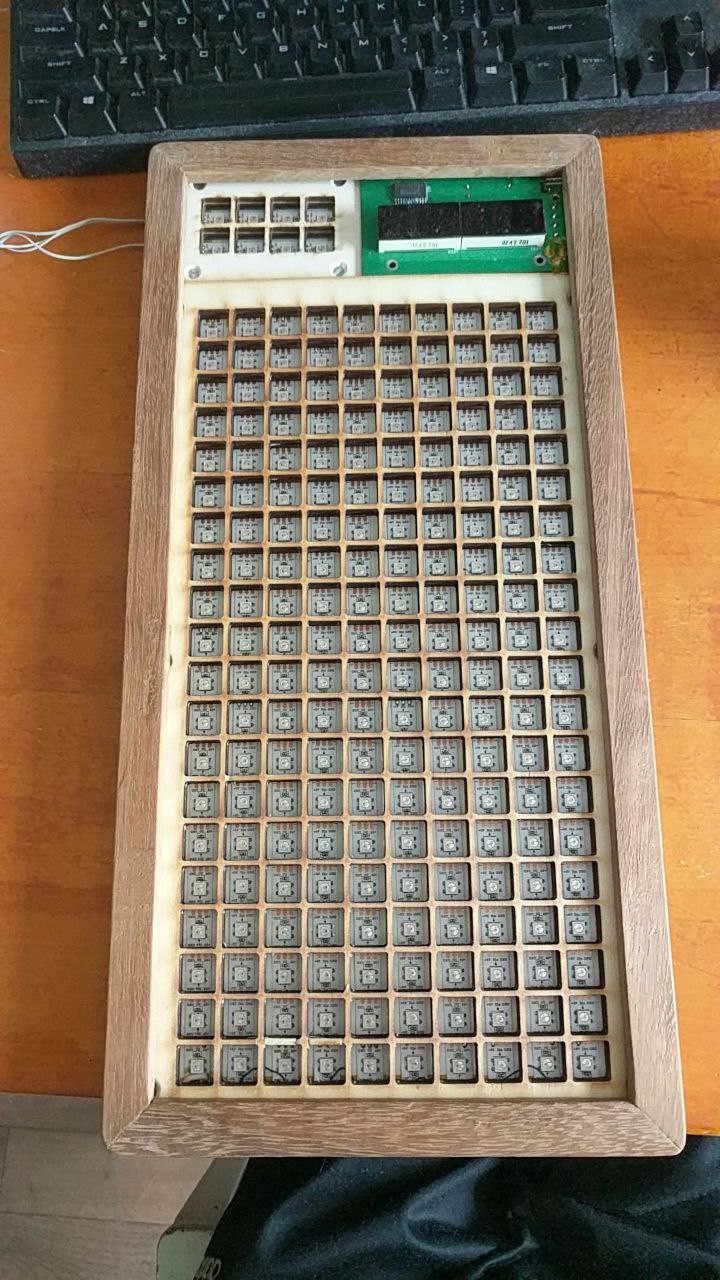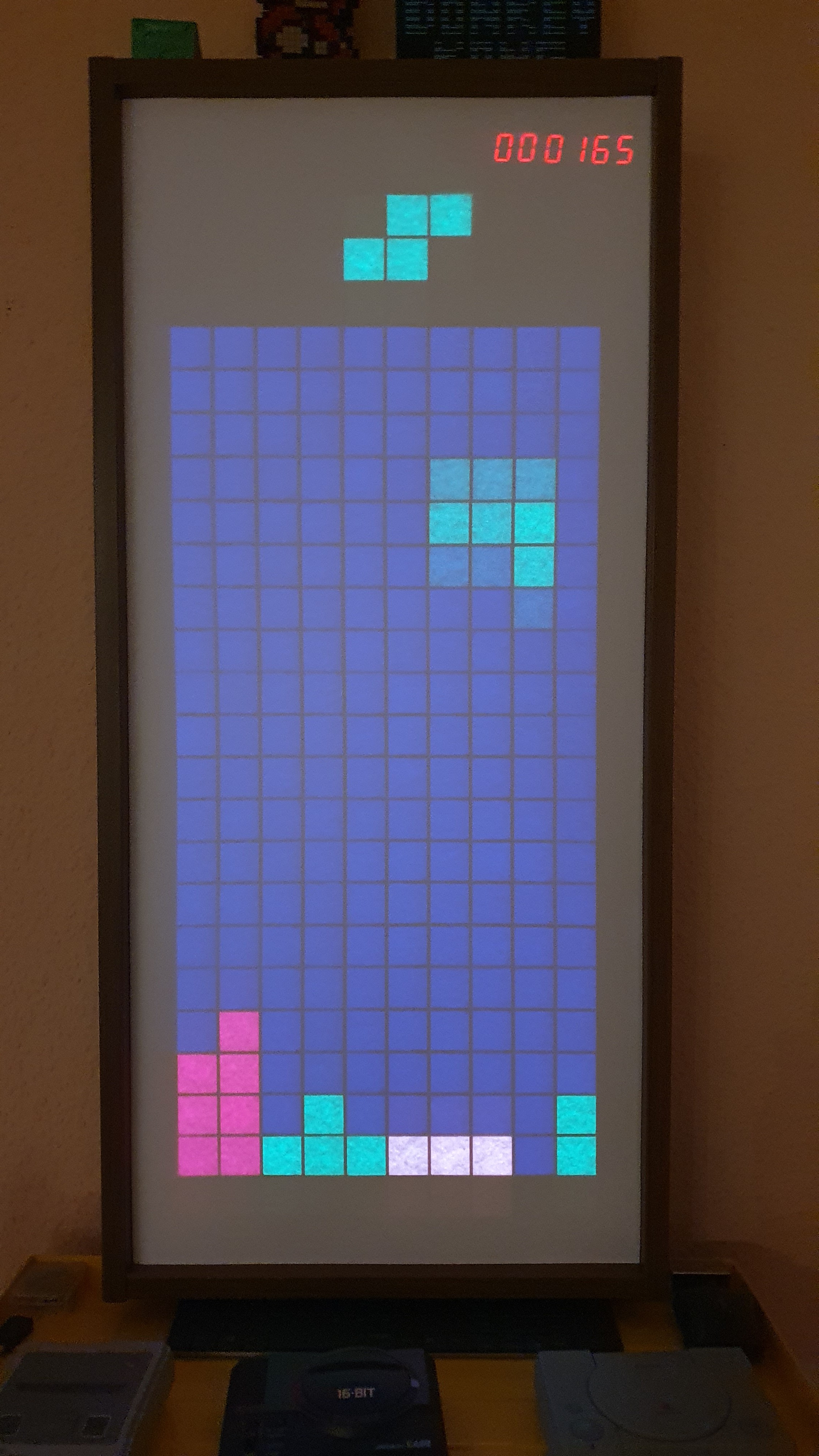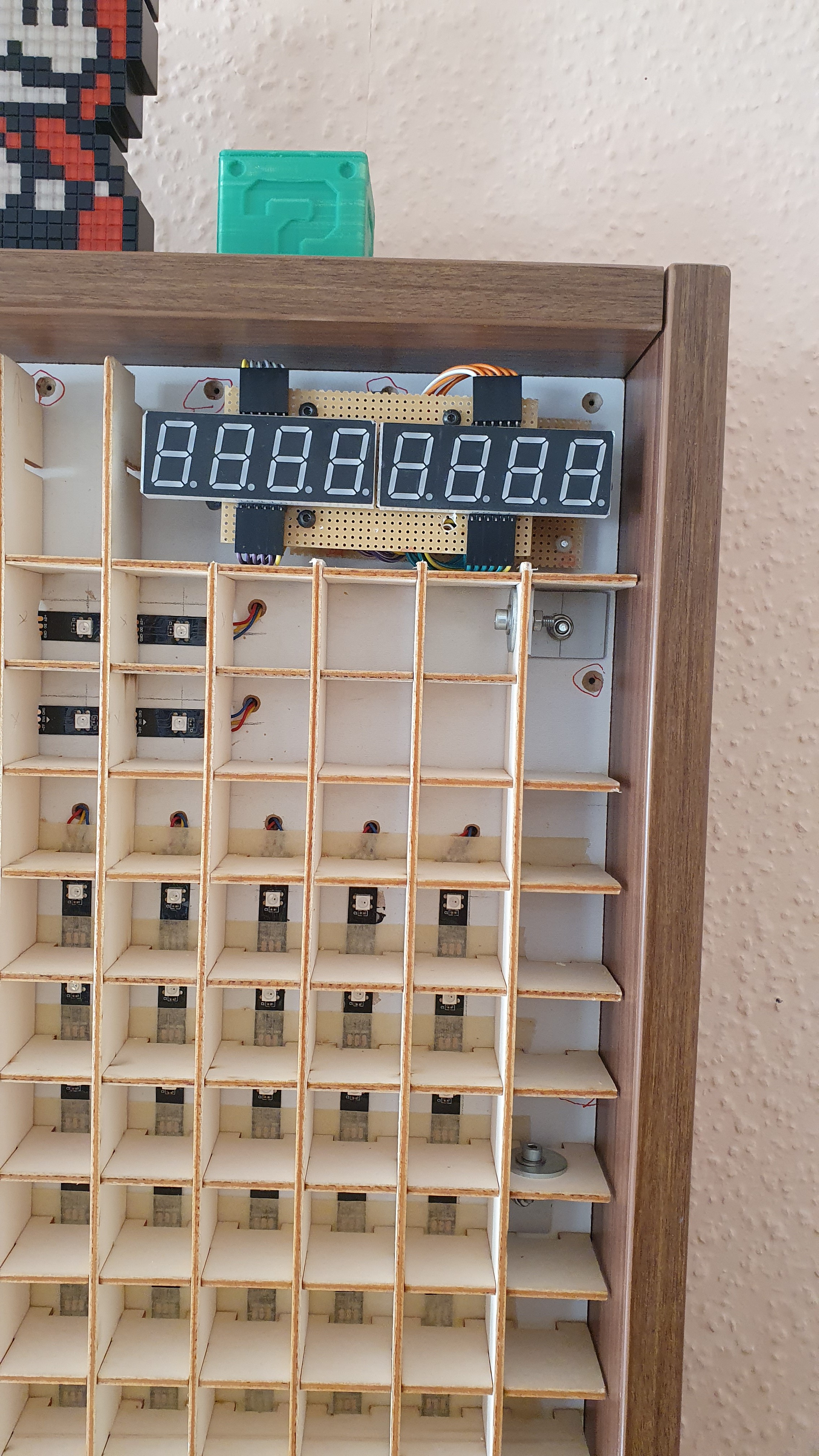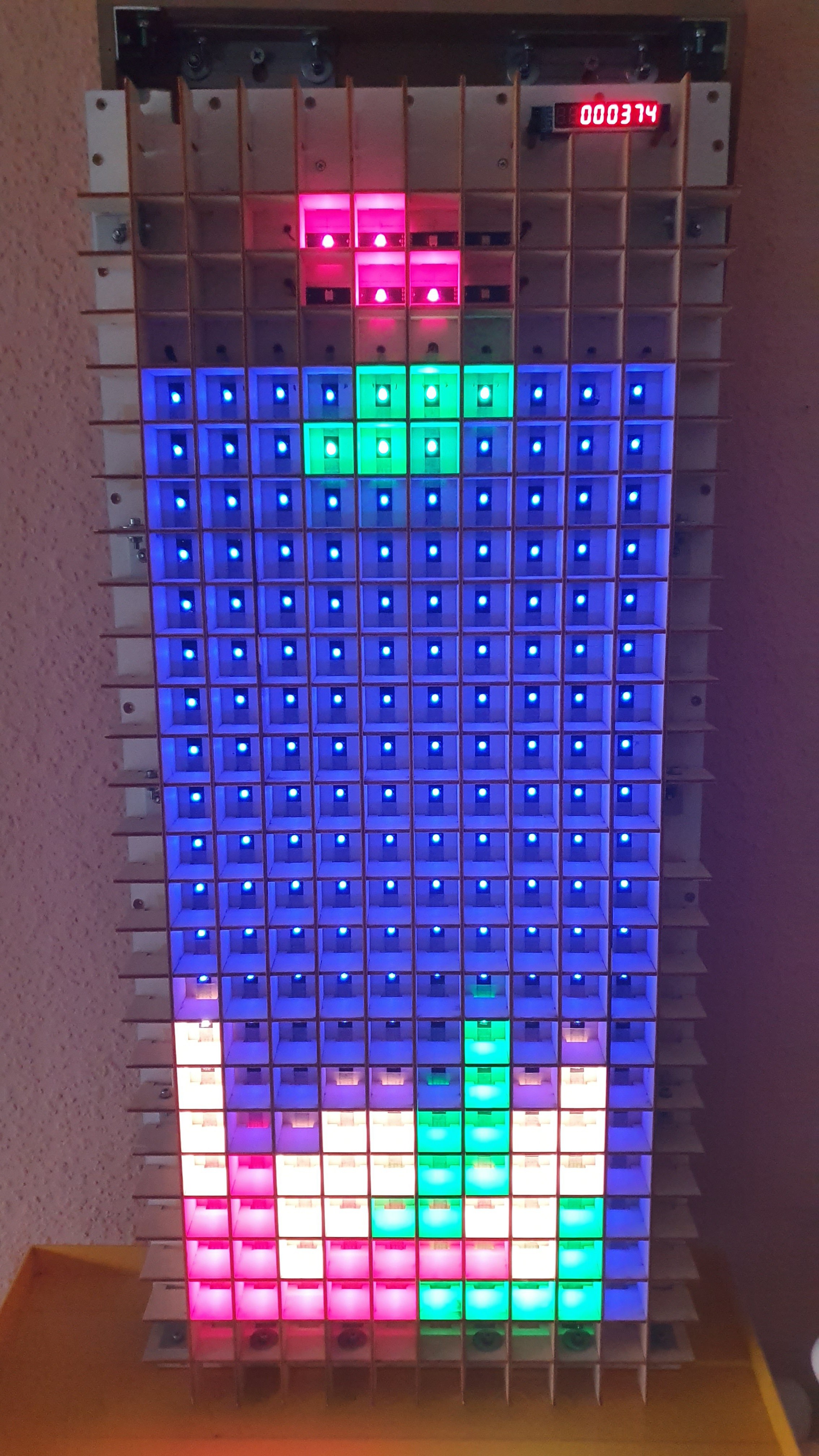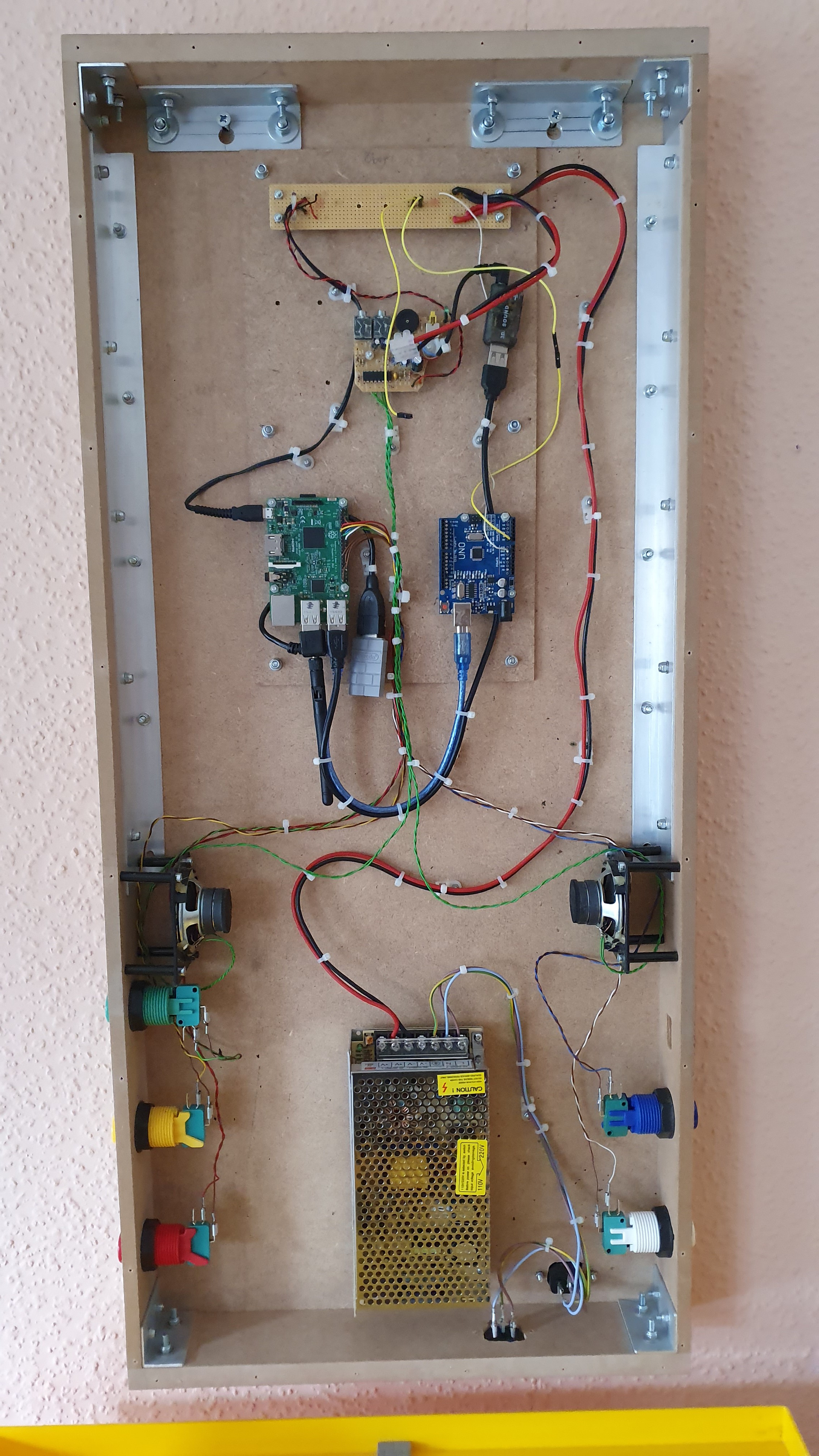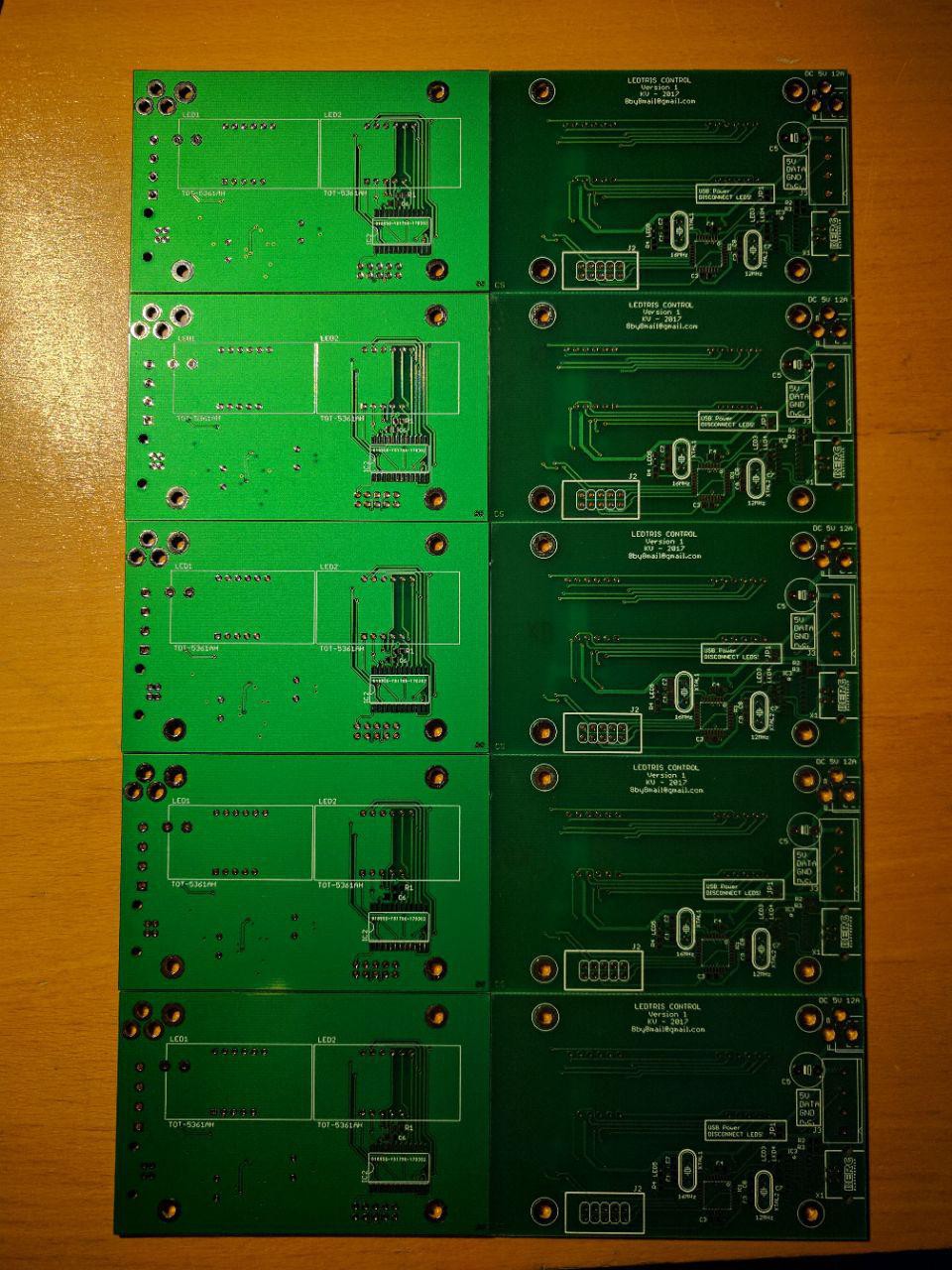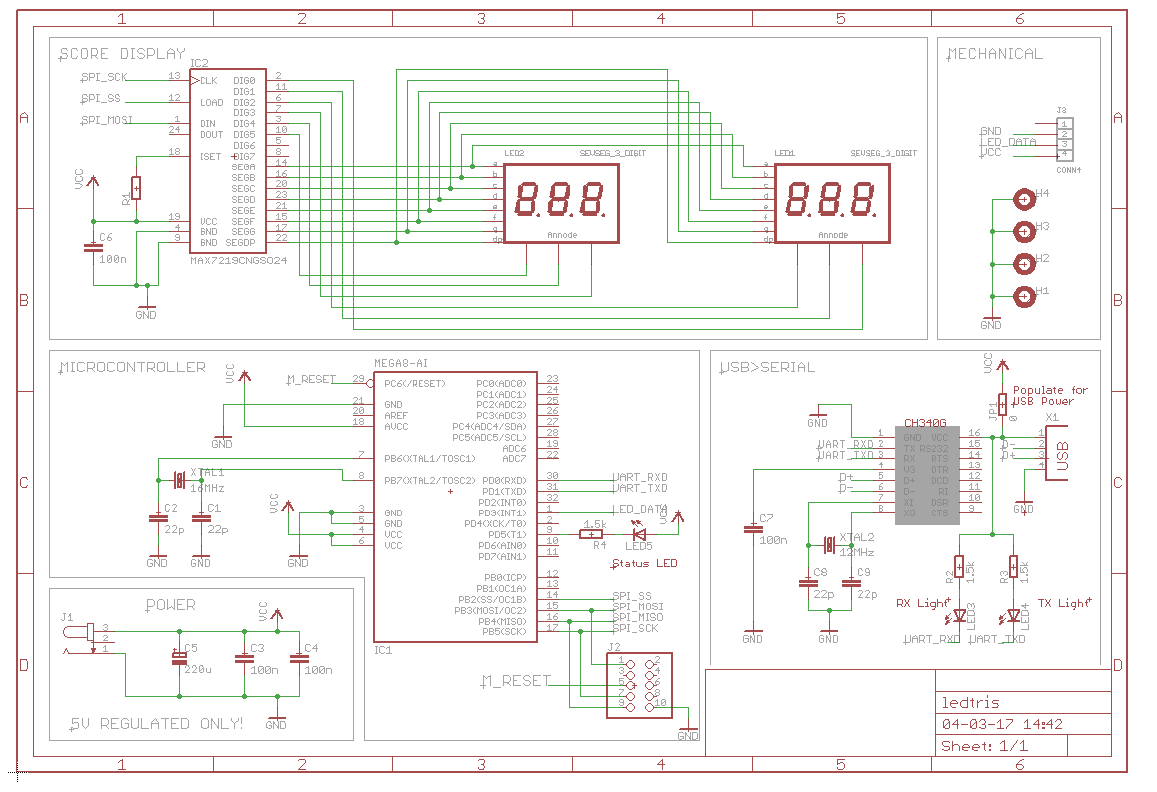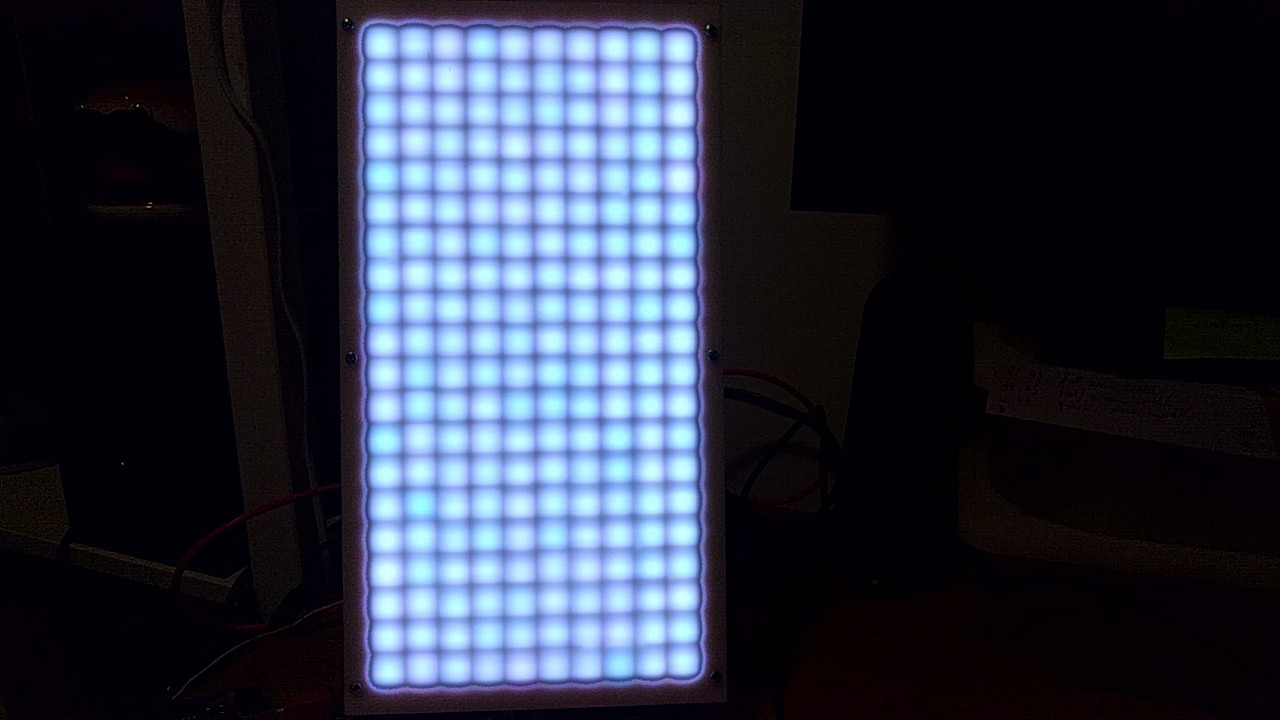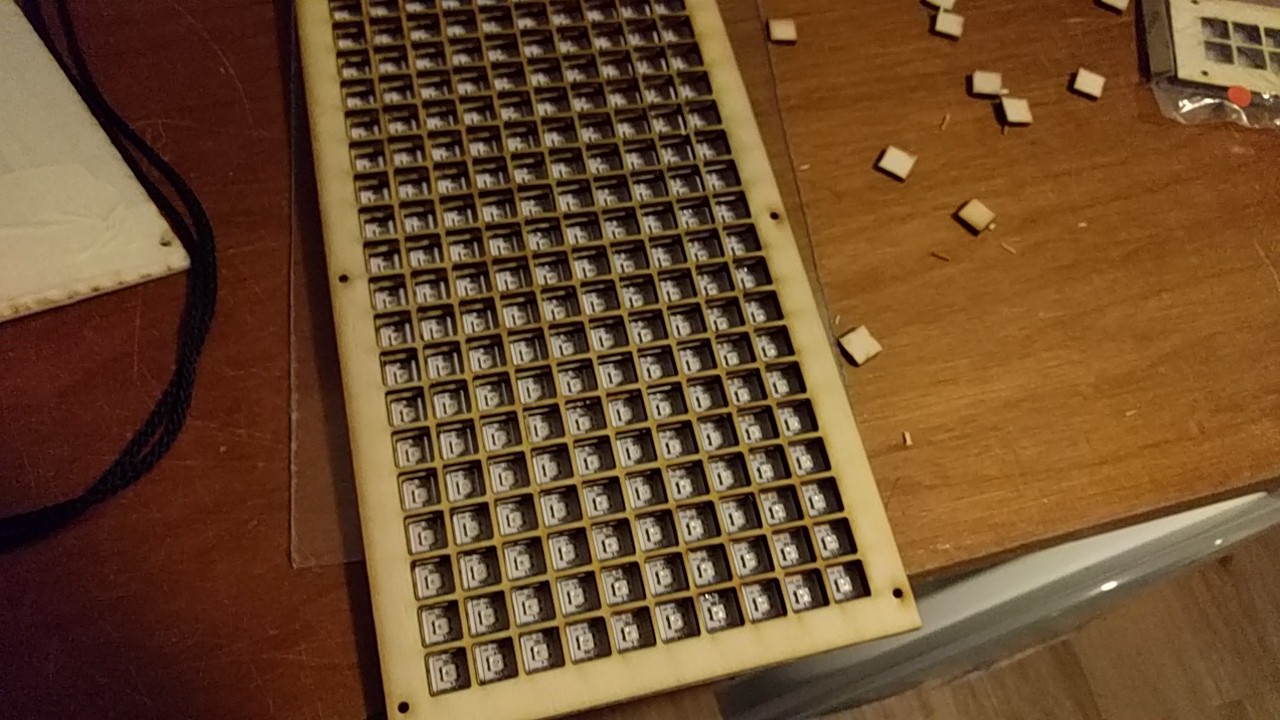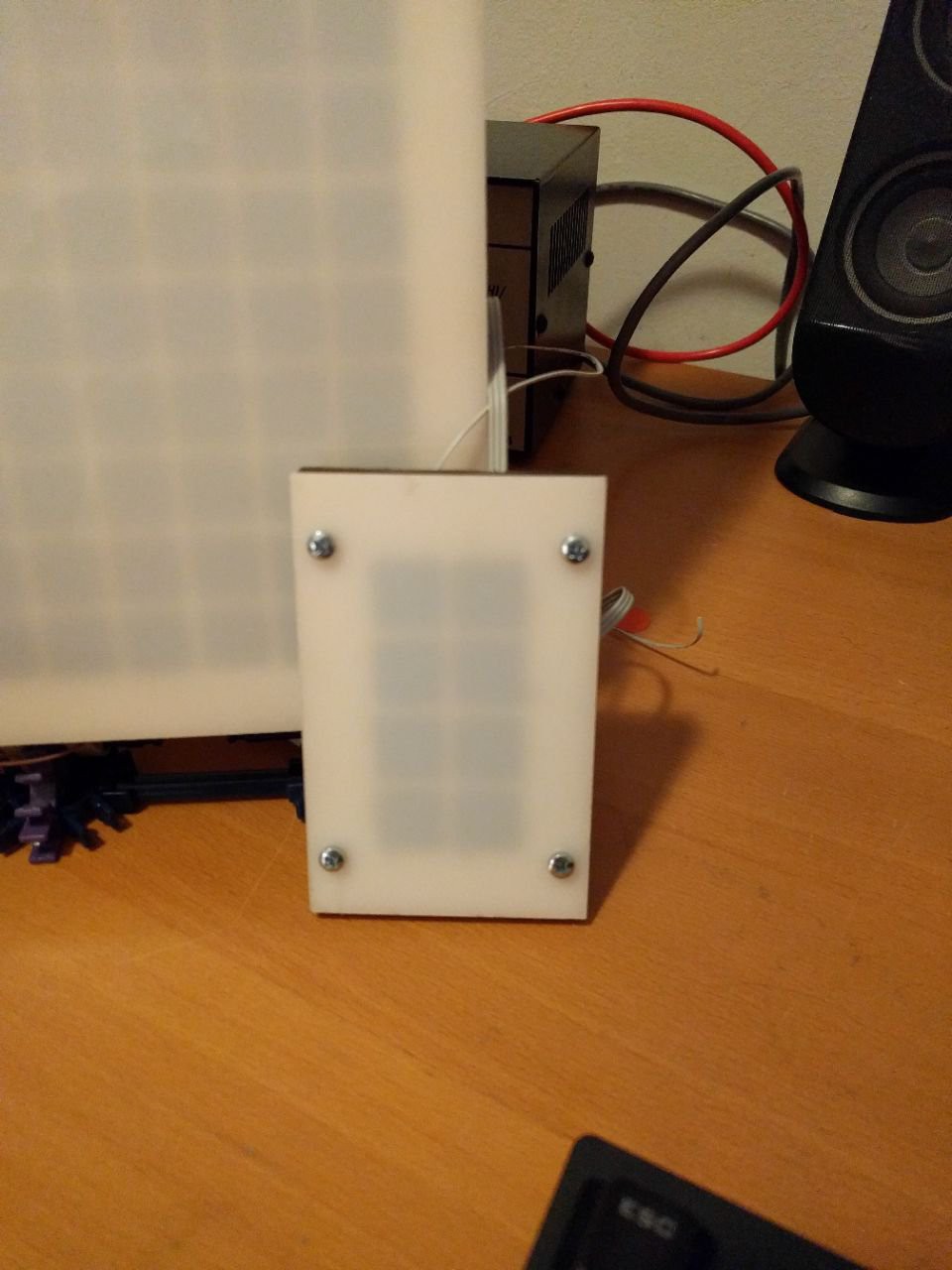-
Making a Frame
06/04/2020 at 13:35 • 0 commentsI took a break from digital manufacturing and made this hardwood frame using a table saw and hand tools. It's a shame the grating will be covered by a diffuser, because I really like the contrast of the different types of wood. Perhaps I can use a very thin sheet of birch veneer as a diffuser?
![]()
-
A bigger display
01/19/2020 at 10:36 • 1 commentA few months ago fellow hackaday.io user [Steve] has created his very own Ledtris display. He used a slightly different construction to my original display, also using laser cut parts. After some troubleshooting we got his display to work. Steve did a very neat job on packaging all the electronics inside his display. He has plans to use the display for other games, such as Dr. Mario.
Edit: Some new pictures.
![]()
![]()
![Steve's Ledtris display Steve's Ledtris display]()
![]()
Steve's display uses a Raspberry Pi3 with a USB Soundcard and some Speakers to produce the sound. An Arduino connected to the Pi drives the LED matrix. The display is larger than mine (90 x 40 cm), so it used less dense LED strips (30 LEDs per meter) On the side of the display there are 5 buttons to decrease/increase volume and power down the system. The system is powered by a 20A 5V power supply, which is plenty to drive the display at full brightness, run the raspberry pi and the speakers. The score display is an 8 digit MAX7219 module. The game is played using a wireless 8-Bit-Do joystick.
If you have built your own Ledtris display and would like to have it featured or if you need help with the build, be sure to get in contact. -
AVR Firmware and Improved Instructions
03/21/2019 at 22:25 • 0 commentsI have updated the build instructions and finished the AVR firmware. Changes in the AVR firmware have been backported to the Arduino sketch. Check it out at
-
PCBs are here!
03/25/2017 at 14:03 • 0 commentsToday the printed circuit boards came in the mail. I am still waiting for some of the components, which I ordered from various Ebay sellers.
![]()
-
Ordering PCBS
03/04/2017 at 13:46 • 0 commentsI recently designed a PCB with a score display, ATmega8 and a USB->serial converter (I chose to use a CH-340, because it's ridiculously cheap.) The score display consists of a 6 digit seven segment display driven by a MAX7219. I could have driven it using the ATmega8, but I would still need a bunch of transistors to drive the cathodes of the display, so in the end this was the cleanest solution.
I will release the gerbers once I have tested these boards.
![]()
![]()
-
Build Instructions and Source Code Released!
02/20/2017 at 20:30 • 0 commentsToday I released the build instructions and source code along with all the required CAD files. You fork this and adapt it to work with your display if you already have one. You will need at least 10x20 LEDs for this to work.
View source and build instructions at: https://bitbucket.org/keoni29/ledtris
-
Burning some plywood & Square Pixels!
02/17/2017 at 21:31 • 0 commentsThe led displays are done now. The repo containing all sourcecode and cad files will be public next week.
I used the lasercutter at school to create a wooden grid. This grid makes the pixels look nice and square. A white diffuser is placed on top and everything is bolted together.
![]()
![]()
![]()
-
It's playable!
02/01/2017 at 11:18 • 0 commentsI threw together a quick test setup with the LED matrix on a makeshift stand and an Arduino driving the WS2812B. It appears to be working up to about 20-30fps. I should have about 3ms of left-over processing time at 60fps, but there seems to be an optimization issue here.
Edit: This appears to be a limitation of the WS2812B.
Here's a video of the test setup:
 Koen van Vliet
Koen van Vliet